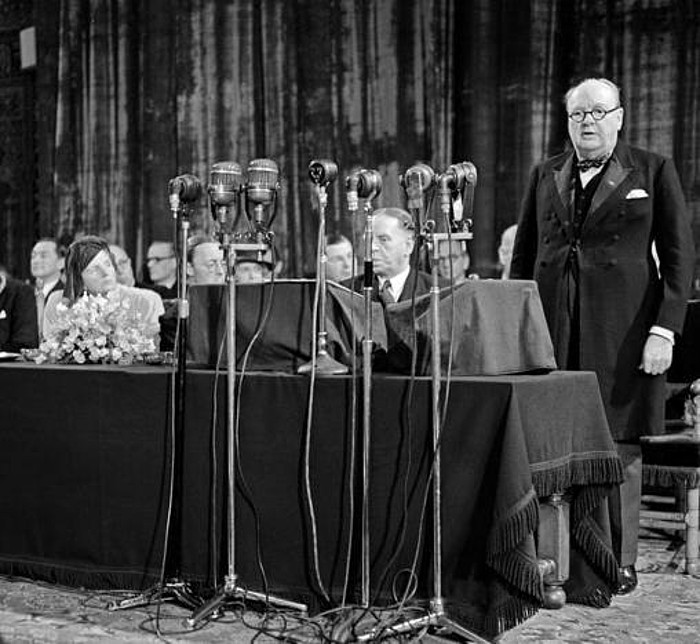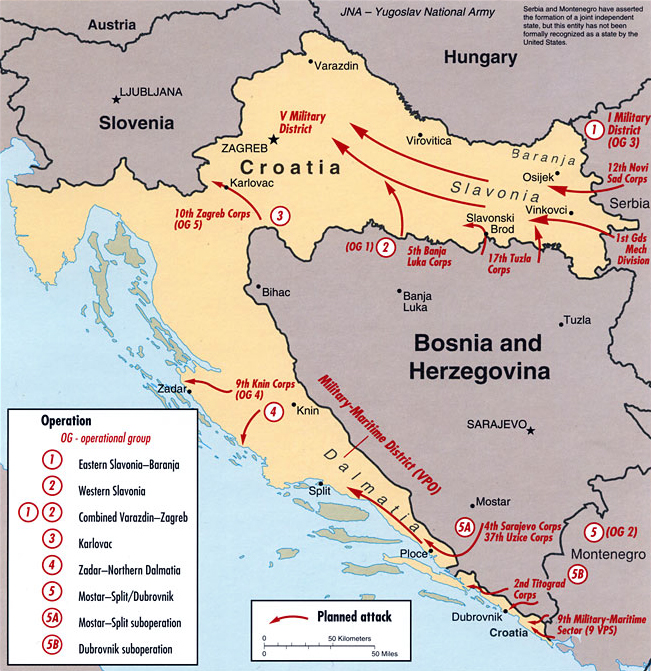|
҆egestin
҆egestin ( sr-cyr, –®–Ķ–≥–Ķ—Ā—ā–ł–Ĺ) is a village in central Croatia, in the municipality of Dvor, Sisak-Moslavina County. It is connected by the D6 highway. Demographics According to the 2011 census, the village of ҆egestin has 35 inhabitants. This represents 26.12% of its pre-war population according to the 1991 census. The 1991 census recorded that 99.25% of the village population were ethnic Serbs (133/134) while 0.75% were ethnic Croats (1/134). : Sights The Church of the Holy Prophet, dedicated to honour the holy Mother of God, was built in 1825. In 1942, during the World War II World War II or the Second World War (1 September 1939 ‚Äď 2 September 1945) was a World war, global conflict between two coalitions: the Allies of World War II, Allies and the Axis powers. World War II by country, Nearly all of the wo ..., the church was destroyed by Ustasha. The church was not rebuilt after the war and, for a long time, it stood with bare walls, without roof ... [...More Info...] [...Related Items...] OR: [Wikipedia] [Google] [Baidu] |
Dvor, Croatia
Dvor ( sr-Cyrl, –Ē–≤–ĺ—Ä) is a municipality in the Banovina region in central Croatia. Administratively, it belongs to the Sisak-Moslavina County and is located across the Una River from Novi Grad in Bosnia and Herzegovina. Dvor is an underdeveloped municipality which is statistically classified as the First Category Area of Special State Concern by the Government of Croatia. Languages and names The town of Dvor was named Dvor na Uni in the Kingdom of Yugoslavia. As a majority of the present-day inhabitants are Serbs, the Serbian language is co-official as a second official language, alongside Croatian, which is the official first language. As of 2023, only some of the legal requirements for the fulfillment of bilingual standards have not been carried out. Official buildings and seals do have Cyrillic signage, but not street or traffic signs. Cyrillic is for municipal meeting documents, but on few other official documents. There are public legal and administrative employees pr ... [...More Info...] [...Related Items...] OR: [Wikipedia] [Google] [Baidu] |
Council Of Europe
The Council of Europe (CoE; , CdE) is an international organisation with the goal of upholding human rights, democracy and the Law in Europe, rule of law in Europe. Founded in 1949, it is Europe's oldest intergovernmental organisation, representing 46 member states from Europe, with a population of approximately 675 million ; it operates with an annual ordinary budget of approximately 500 million euros. The organisation is distinct from the European Union (EU), although people sometimes confuse the two organisations ‚Äď partly because the EU has adopted the original Flag of Europe, European flag, designed for the Council of Europe in 1955, as well as the Anthem of Europe, European anthem. No country has ever joined the EU without first belonging to the Council of Europe. The Council of Europe is an official United Nations General Assembly observers, United Nations observer. Unlike the EU, the Council of Europe cannot make binding laws; however, the council has produced a numbe ... [...More Info...] [...Related Items...] OR: [Wikipedia] [Google] [Baidu] |
Village
A village is a human settlement or community, larger than a hamlet but smaller than a town with a population typically ranging from a few hundred to a few thousand. Although villages are often located in rural areas, the term urban village is also applied to certain urban neighborhoods. Villages are normally permanent, with fixed dwellings; however, transient villages can occur. Further, the dwellings of a village are fairly close to one another, not scattered broadly over the landscape, as a dispersed settlement. In the past, villages were a usual form of community for societies that practice subsistence agriculture and also for some non-agricultural societies. In Great Britain, a hamlet earned the right to be called a village when it built a church.-4; we might wonder whether there's a point at which it's appropriate to talk of the beginnings of French, that is, when it wa ... ''village'', from Latin ''villńĀticus'', ultimately from Latin ''villa'' (English ''vi ... [...More Info...] [...Related Items...] OR: [Wikipedia] [Google] [Baidu] |
Serb National Council
The Serb National Council ( sh-Cyrl-Latn, –°—Ä–Ņ—Ā–ļ–ĺ –Ĺ–į—Ä–ĺ–ī–Ĺ–ĺ –≤–ł—ė–Ķ—õ–Ķ, Srpsko narodno vijeńáe) is an elected political, consulting and coordinating body which acts as a form of self-government and autonomous cultural institution of the Serbs of Croatia in matters regarding civil rights and cultural identity. The council's main focuses are human, civil and national rights, as well the issues of Serbs of Croatia identity, participation and integration in the Croatian society. Since 2000 the council is a member of the Federal Union of European Nationalities. The body was established as the national coordination of the Serb community in Croatia in 1997, in the aftermath of the Croatian War of Independence and defeat of the self-proclaimed Republic of Serbian Krajina. The legal basis for its establishment was extracted from the international Erdut Agreement signed in 1995 which ended the conflict in the Eastern Slavonia, Baranja and Western Syrmia by granting rights on ... [...More Info...] [...Related Items...] OR: [Wikipedia] [Google] [Baidu] |
World War II
World War II or the Second World War (1 September 1939 ‚Äď 2 September 1945) was a World war, global conflict between two coalitions: the Allies of World War II, Allies and the Axis powers. World War II by country, Nearly all of the world's countries participated, with many nations mobilising all resources in pursuit of total war. Tanks in World War II, Tanks and Air warfare of World War II, aircraft played major roles, enabling the strategic bombing of cities and delivery of the Atomic bombings of Hiroshima and Nagasaki, first and only nuclear weapons ever used in war. World War II is the List of wars by death toll, deadliest conflict in history, causing World War II casualties, the death of 70 to 85 million people, more than half of whom were civilians. Millions died in genocides, including the Holocaust, and by massacres, starvation, and disease. After the Allied victory, Allied-occupied Germany, Germany, Allied-occupied Austria, Austria, Occupation of Japan, Japan, a ... [...More Info...] [...Related Items...] OR: [Wikipedia] [Google] [Baidu] |
Croats
The Croats (; , ) are a South Slavs, South Slavic ethnic group native to Croatia, Bosnia and Herzegovina and other neighboring countries in Central Europe, Central and Southeastern Europe who share a common Croatian Cultural heritage, ancestry, Culture of Croatia, culture, History of Croatia, history and Croatian language, language. They also form a sizeable minority in several neighboring countries, namely Croats of Slovenia, Slovenia, Burgenland Croats, Austria, the Croats in the Czech Republic, Czech Republic, Croats in Germany, Germany, Croats of Hungary, Hungary, Croats of Italy, Italy, Croats of Montenegro, Montenegro, Croats of Romania, Romania, Croats of Serbia, Serbia and Croats in Slovakia, Slovakia. Due to political, social and economic reasons, many Croats migrated to North and South America as well as New Zealand and later Australia, establishing a Croatian diaspora, diaspora in the aftermath of World War II, with grassroots assistance from earlier communities an ... [...More Info...] [...Related Items...] OR: [Wikipedia] [Google] [Baidu] |
Serbs Of Croatia
The Serbs of Croatia ( sh-Cyrl-Latn, separator=" / ", –°—Ä–Ī–ł —É –•—Ä–≤–į—ā—Ā–ļ–ĺ—ė, Srbi u Hrvatskoj) or Croatian Serbs ( sh-Cyrl-Latn, separator=" / ", –•—Ä–≤–į—ā—Ā–ļ–ł –°—Ä–Ī–ł, Hrvatski Srbi) constitute the largest national minority in Croatia. The community is predominantly Eastern Orthodoxy in Croatia, Eastern Orthodox Christian by religion, as opposed to the Croats who are Catholic Church in Croatia, Catholic. In some regions of modern-day Croatia, mainly in southern Dalmatia, ethnic Serbs possibly have been present from the Early Middle Ages. Serbs from modern-day Serbia and Serbs of Bosnia and Herzegovina, Bosnia-Herzegovina started actively migrating to Croatia at a time when the Habsburg monarchy was engaged in a series of wars against the Ottoman Empire. Great Migrations of the Serbs, Several migration waves happened after 1538, when the Emperor Ferdinand I granted them the right to settle on the territory of the Military Frontier. In exchange for land and exempti ... [...More Info...] [...Related Items...] OR: [Wikipedia] [Google] [Baidu] |
Croatian War Of Independence
The Croatian War of Independence) and (rarely) "War in Krajina" ( sr-Cyrl-Latn, –†–į—ā —É –ö—Ä–į—ė–ł–Ĺ–ł, Rat u Krajini) are used. was an armed conflict fought in Croatia from 1991 to 1995 between Croats, Croat forces loyal to the Government of Croatia‚ÄĒwhich had declared Independence of Croatia, independence from the Socialist Federal Republic of Yugoslavia (SFRY)‚ÄĒand the Serbs, Serb-controlled Yugoslav People's Army (JNA) and Serbs of Croatia, local Serb forces, with the JNA ending its combat operations by 1992. A majority of Croats supported Croatia's independence from Yugoslavia, while many ethnic Serbs living in Croatia, supported by Republic of Serbia (1992‚Äď2006), Serbia, opposed the secession and advocated Serb-claimed lands to be in a common state with Serbia. Most Serbs sought a new Serb state within a Yugoslav federation, including areas of Croatia and Bosnia and Herzegovina with ethnic Serb majorities or significant minorities, and attempted to conquer as muc ... [...More Info...] [...Related Items...] OR: [Wikipedia] [Google] [Baidu] |
D6 (Croatia)
D6 is a state road in central parts of Croatia connecting Jurovski Brod border crossing to Slovenia and Dvor, Croatia, Dvor border crossing to Bosnia and Herzegovina via Karlovac, Vojnińá, Glina, Croatia, Glina and Dvor, Croatia, Dvor. The road also serves as a connection to the A1 (Croatia), A1 motorway Karlovac interchange via the D1 (Croatia), D1 state road in Karlovac. The road is long. The road, like all state roads in Croatia, is managed and maintained by Hrvatske ceste, a state-owned company. Traffic volume Traffic is regularly counted and reported by Hrvatske ceste, the operator of the road. Road junctions and populated areas Maps Sources {{State roads in Croatia State roads in Croatia, D006 Transport in Karlovac County, D006 Sisak-Moslavina County, D006 Transport in Karlovac, D006 ... [...More Info...] [...Related Items...] OR: [Wikipedia] [Google] [Baidu] |
Croatia
Croatia, officially the Republic of Croatia, is a country in Central Europe, Central and Southeast Europe, on the coast of the Adriatic Sea. It borders Slovenia to the northwest, Hungary to the northeast, Serbia to the east, Bosnia and Herzegovina and Montenegro to the southeast, and shares a maritime border with Italy to the west. Its capital and largest city, Zagreb, forms one of the country's Administrative divisions of Croatia, primary subdivisions, with Counties of Croatia, twenty counties. Other major urban centers include Split, Croatia, Split, Rijeka and Osijek. The country spans , and has a population of nearly 3.9 million. The Croats arrived in modern-day Croatia, then part of Illyria, Roman Illyria, in the late 6th century. By the 7th century, they had organized the territory into Duchy of Croatia, two duchies. Croatia was first internationally recognized as independent on 7 June 879 during the reign of Duke Branimir of Croatia, Branimir. Tomislav of Croatia, Tomis ... [...More Info...] [...Related Items...] OR: [Wikipedia] [Google] [Baidu] |
Central European Summer Time
Central European Summer Time (CEST, UTC+02:00), sometimes referred to as Central European Daylight Time (CEDT), is the standard clock time observed during the period of summer daylight-saving in those European countries which observe Central European Time (CET; UTC+01:00) during the other part of the year. It corresponds to UTC+02:00, which makes it the same as Eastern European Time, Central Africa Time, South African Standard Time, Egypt Standard Time and Kaliningrad Time in Russia. Names Other names which have been applied to Central European Summer Time are Middle European Summer Time (MEST), Central European Daylight Saving Time (CEDT), and Bravo Time (after the second letter of the NATO phonetic alphabet). Period of observation Since 1996, European Summer Time has been observed between 01:00 UTC (02:00 CET and 03:00 CEST) on the last Sunday of March, and 01:00 UTC on the last Sunday of October; previously the rules were not uniform across the European Union. The ... [...More Info...] [...Related Items...] OR: [Wikipedia] [Google] [Baidu] |








